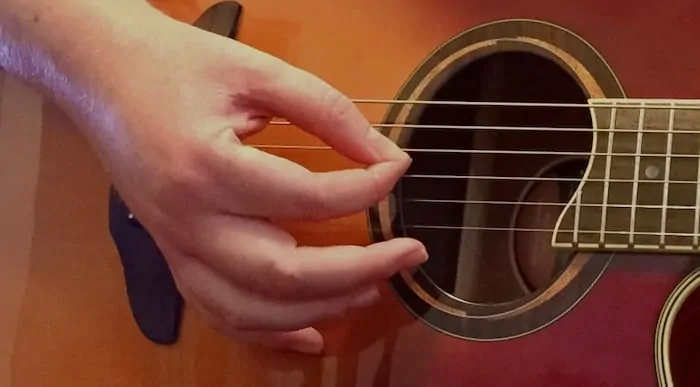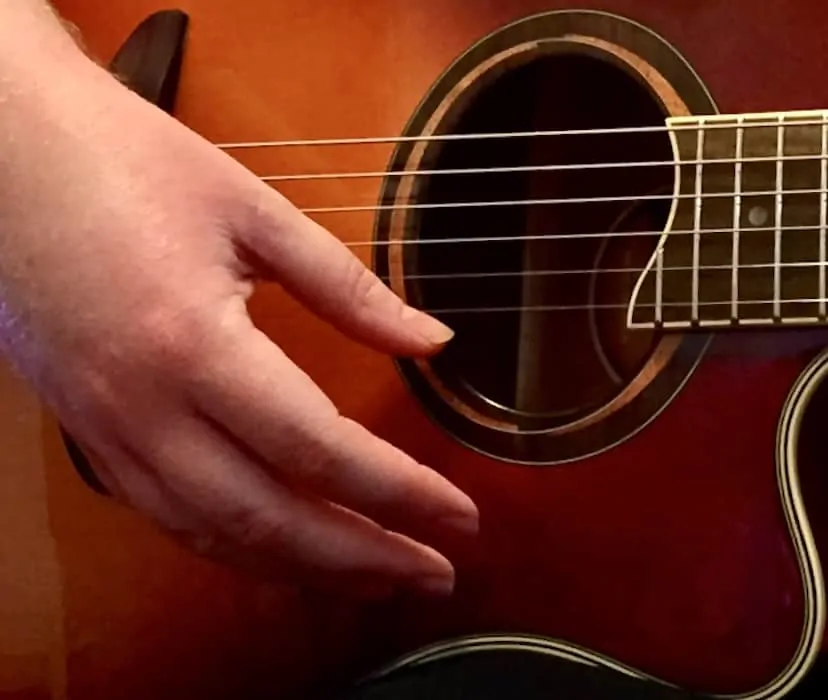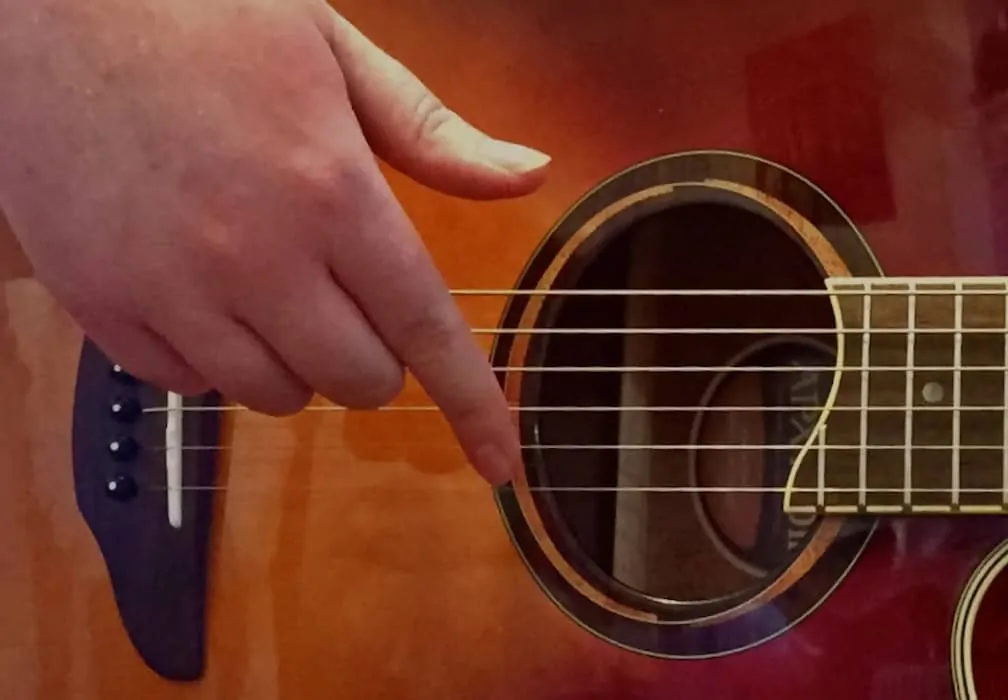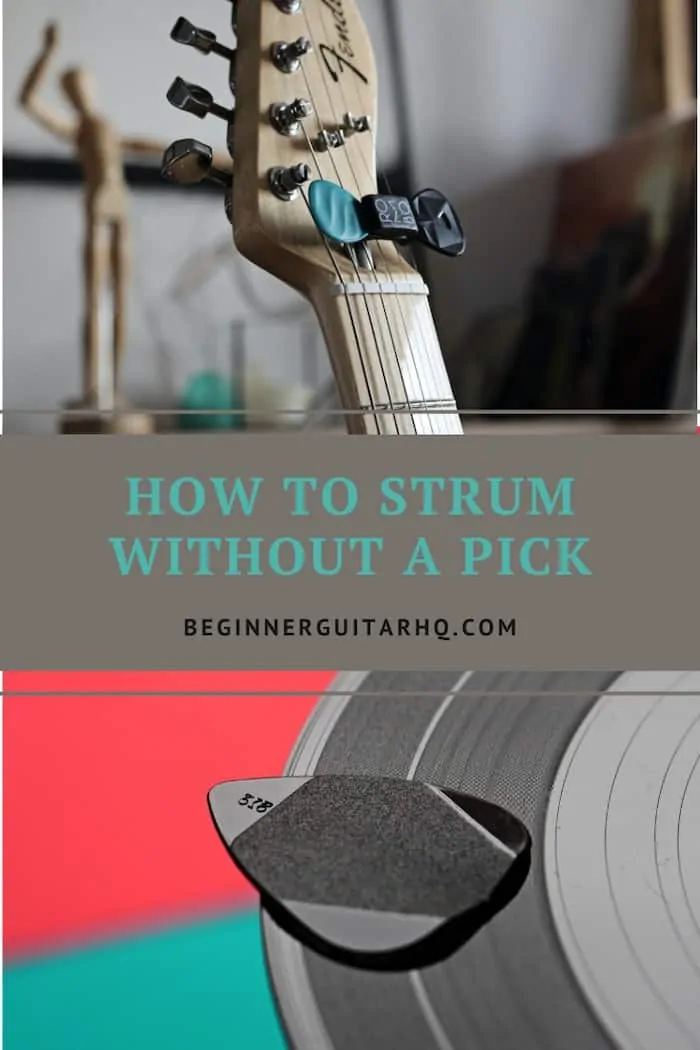For many steel-string acoustic and electric guitarists, guitar picks (also called plectrums) are must-have accessories. With a variety of materials, shapes, thicknesses, textures and flexibilities to choose from, you can find one for nearly every style of playing.
As a beginner, chances are you were taught to play with a pick. This makes sense, because it’s the easiest way to strum. But it’s not the only way (or sometimes even the best way) to play guitar…
Before we dive into these other strategies, let’s consider why you might want to strum without a pick. This way, you can choose the technique that works best for your style.
Why Ditch the Pick?
Strumming with a pick has its benefits. With a strong attack, it amps up the speed and volume of your playing. Many picks give you a bright, treble-heavy tone. Plus, they tend to be cheap, especially when you buy them in a pack.
But strumming without a pick has benefits too. For songs with both fingerpicking and strumming sections, you can ditch the pick completely. This way, you don’t have to clamp it awkwardly between your knuckles when you fingerpick.
Especially for acoustic guitar, playing without a pick helps you control your volume.
While I always keep a few picks on hand, I usually play without them during my late-night jam sessions. This way, I don’t disturb my roommates – or my neighbors.
Finally, just as they have a magical way of turning up in unexpected places, picks have a magical way of disappearing when you need them most. But if you learn to play without one, you’ll never have to worry when you lose it during a jam session or a gig.
No matter what style or type of guitar you play, knowing how to strum with and without a pick will help you become a better, more versatile player.
Strategies
So, how do you strum without a pick? You have two options – use a similar object or play with your hands.
I’ve seen many players use random household objects to strum their guitars. This includes:
- Bread clips
- Credit card shards
- Cut-out shapes from plastic lids
- Coins
See how Queen’s Brian May plays his electric with a vintage six-pence coin.
This strategy works for some guitarists. However, I wouldn’t recommend it for beginners. Without a proper pick, you risk accidentally scratching the body of your guitar or having it snag on your strings. Depending on the material, it can also slip out of your fingers while you’re playing.
But by using your thumb, fingers or both, you can safely strum like a pro on steel-string and nylon-string guitars.
Ghost picking
Also called “pretend picking” or “fake picking,” this technique involves creating a pick shape with your thumb and index finger.
How do you do this? Again, you have two different options. The first is to pretend that you’re holding a pick. It might help to actually hold one and remove it. Just until you get used to making the shape without one.
Your thumb should be slightly behind, pressing just below the tip of your index finger. The rest of your fingers should extend away from your index – kind of like a relaxed OK shape.
Be careful not to point your index finger too far into your guitar. Otherwise, it will snag on the strings.
Strum the same way you would with a normal pick. Angle the tip of your index toward your chest as you flick down with your wrist and toward your feet as you flick up.
Don’t worry if this feels awkward. Take it nice and slow by playing whole notes and half notes. Then you can work your way up to quarter note, eighth note and sixteenth note exercises.
If you’re playing without long nails, this variation will give you a warm, mid-heavy tone – thanks to the fleshy pad on your index finger.
For a brighter, more authentic sound, you can form a pick by pressing your fingernail and thumbnail together. Then, like the first variation, press your nails slightly into your strings.
This second variation works best if your nails are about ½ an inch longer than the tip of your thumb and index finger.
However, if your fingernails are brittle and you play heavy gauge steel strings, this isn’t the best playing option. You could invest in some acrylic nails – like many fingerstyle guitarists do. Or, you could choose a different technique where you can play without your nails and just use the fleshy pads of your thumb and fingers.
Thumb strumming
This is probably the easiest way to play without a pick, thanks to your thumb’s natural dexterity.
However, without the clear point of a pick to guide you, you’ll need to position your thumb at different angles until you find the one that gives you the clearest sound. Be gentle – you don’t want any painful snags.
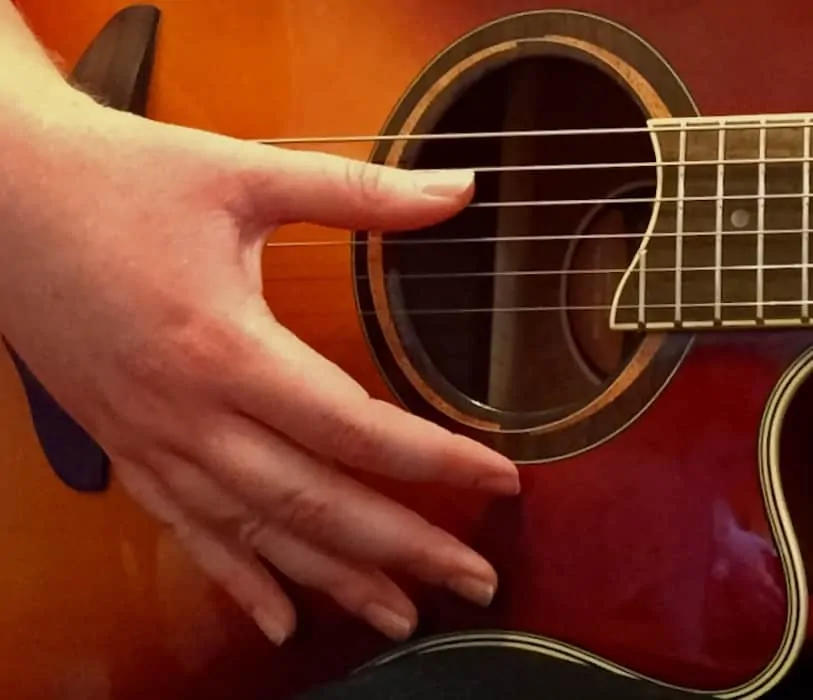
I like to bend my thumb slightly upward for more controlled movements.
When you strum fast, it’s tempting to tense up and try to force the movement from your elbow. This isn’t only uncomfortable – you might even pull a muscle.
Instead, relax your thumb. If you anchor your palm near the bridge of your guitar, you can still play at a fast, steady pace from your wrist.
Unlike ghost picking, thumb strumming creates a soft sound – especially when you play without your thumbnail. For a brighter tone, add it to your upstrokes. This will help you capture the sound made famous by jazz guitar legend Wes Montgomery.
Finger strumming
Another common strategy is to play without your thumb, replacing it with your other fingers.
Many ukulele players strum with only their index finger. You can also adapt this for your guitar, with the same wrist movement you would use with your thumb.
Index strumming is the opposite of thumb strumming. You hit the upstrokes with the pad of your finger and the downstrokes with your nail.
This technique is easy enough to pick up. However, many guitarists find that playing with just your index finger gives you a weak, treble-heavy tone.
For a fuller, richer tone, try gently curling your index, middle and ring fingers like a C-shape. Send them downward in a raking motion, brushing the strings with your nails. You’ll often hear this style in Spanish guitar genres. But it works just as well with steel-string guitars.
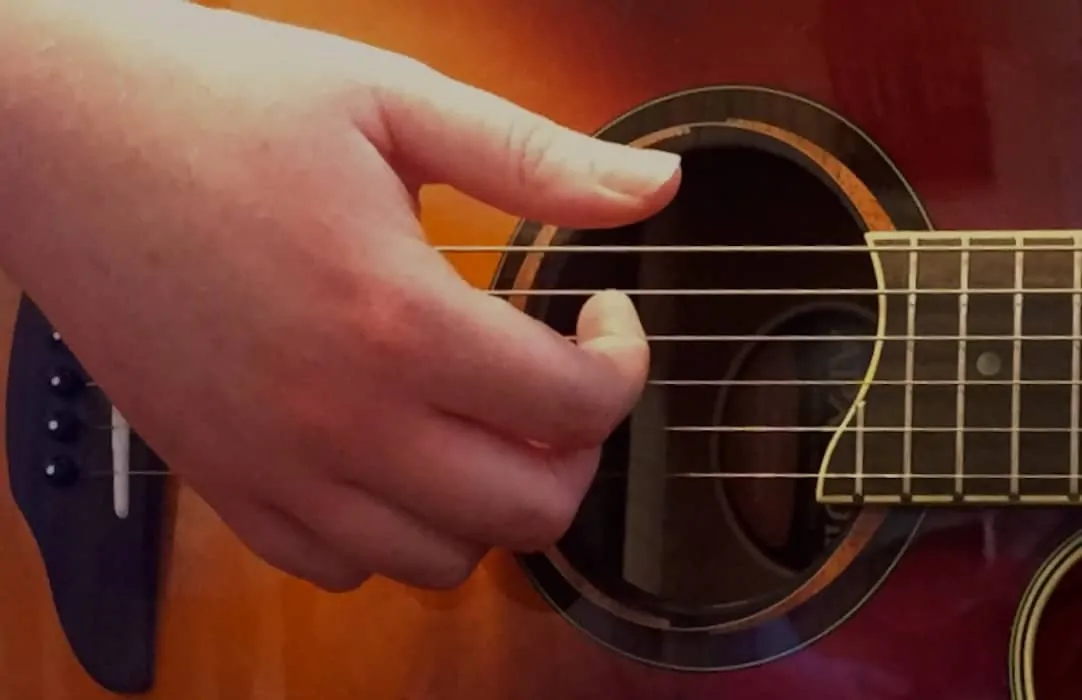
With both of these techniques, it’s important to:
- Stay relaxed
- Move from your wrist
- Experiment with how you angle your fingers.
With finger strumming, there’s also a risk of scraping your knuckles against your strings. But as long as your hands are properly positioned, you should be fine.
Depending how agile your fingers are, you may find it trickier to strum with your fingers than with your thumb. No matter what technique you use, it’s a good idea to stretch your fingers at the start of each practice session. You’ll soon find it just as easy to strum with your fingers.
Most guitarists who use these techniques play with their fingernails. Because of this, they produce a bright tone. However, if you want the same warm, fleshy tone as thumb strumming, you could either trim your nails or flatten your fingers slightly.
Carter scratch
Also called Carter Family picking or the thumb brush, the Carter scratch combines downstrokes on the thumb with up- and downstrokes on the pad and nail of the index finger.
Popularized by “Mother” Maybelle Carter, the pioneering lead guitarist for The Carter Family, the Carter scratch quickly became a standard fingerstyle technique in American music (“Carter Family 1927” by Victor Talking Machine Company / CC0).
Maybelle Carter used her thumb to play melody and her index to keep the rhythm. Nowadays, her technique is often used to create the famous boom chick-a rhythm of country and bluegrass.
As the name suggests, this is a 2-beat pattern:
- Boom: a quarter note downstroke from your thumb on the bass string. Usually the 6th, 5th or 4th string.
- Chick-a: an eighth note upstroke and eighth note downstroke from your index on the treble strings. Usually a combination of the 4th-1st strings.
The Carter scratch isn’t limited to just boom chick-as. You can use it however you like, experimenting with different rhythms across genres. You could even mix it up by playing with your thumb and middle finger instead.
Clawhammer
Borrowed from banjo players, clawhammer strumming is another effective style that combines the thumb and fingers.
Like the Carter scratch, you play bass note downstrokes with your thumb. Like Spanish-style strumming, you need to curl your first three fingers like a claw. However, instead of a full raking motion, you only strike the treble notes with your fingernails.
This technique is most famously associated with Dire Straits guitarist Mark Knopfler, who adapted it to electric blues rock. But most clawhammer guitarists stick to its roots in country, bluegrass and Delta blues.
Here, bluegrass star Molly Tuttle demos how to play clawhammer guitar.
Rasgueado
A mainstay of flamenco guitar, rasgueado encompasses a number of patterns. Some are strummed only with the index, middle and ring fingers. Others include the thumb and/or pinky.
One thing rasgueados have in common is their use of quickfire movements. You flick your fingers out one at a time, using the nail (and sometimes the fleshy pad) to strike the strings. Most of the time, you’ll use your fingers for downstrokes and your thumb for upstrokes. However, there’s lots of variations that include index upstrokes and thumb downstrokes.
Picture your fingers curling up and shooting forward one at a time, like karate punches. This is the essence of how to play rasgueado.
While they sound bright and beautiful, rasgueados are fingernail destroyers. Flamenco guitarists have to add special lacquers to stop them from breaking. Therefore, I wouldn’t recommend them at all for steel-string players.
But with the proper nail reinforcements on a nylon-string guitar, they add a cool Spanish flavor to any genre.
Final Thoughts
Although picks are the most common strumming tools for beginner guitarists, they aren’t the only option. You can learn how to play just as well without one.
By experimenting with different strategies for your thumb and fingers, you can become your own pick – especially if you don’t have one handy. This gives you the flexibility to play wherever, however you want – whether it’s on a steel-string or nylon-string guitar.
Who knows? You might end up inventing your own strumming style!


